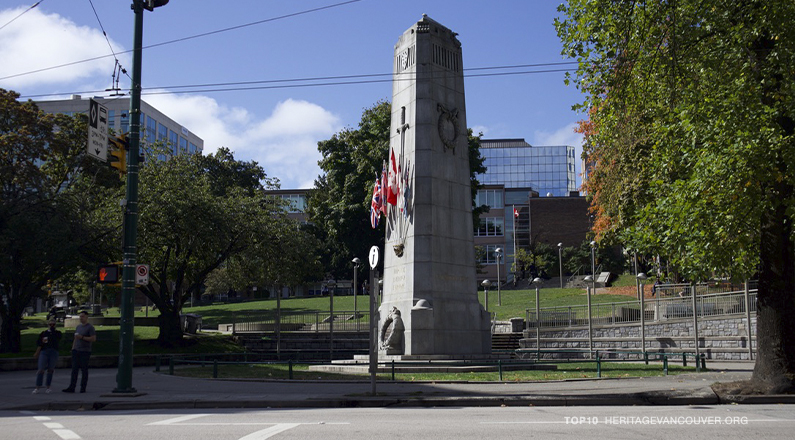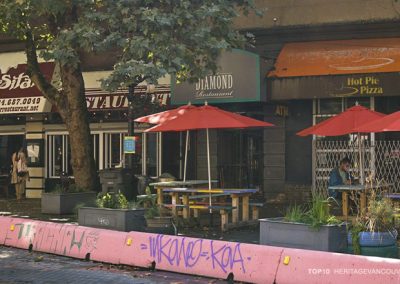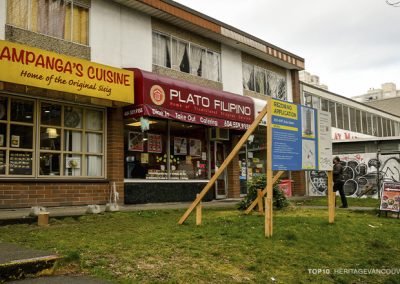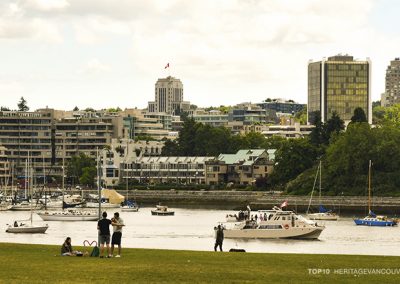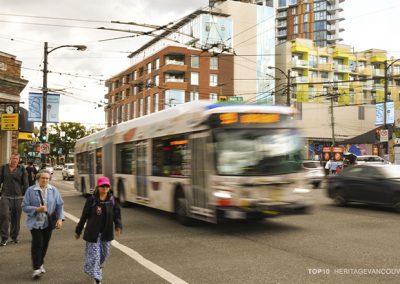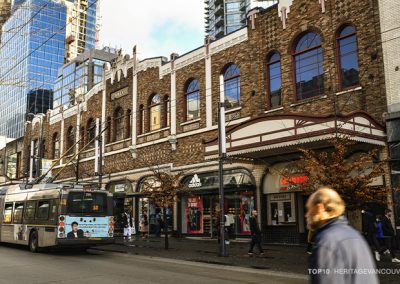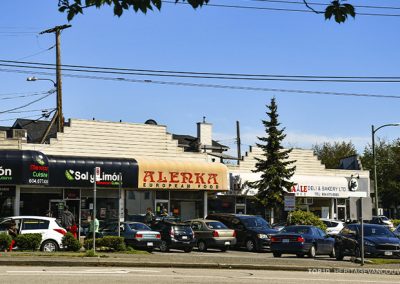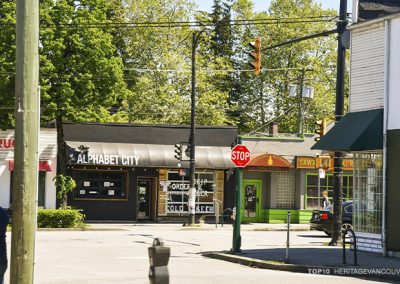The Victory Square Plan Area extends on two sides of Victory Square Park and includes the blocks on Pender and Hastings Street between Richards Street and most of the block extending east from Abbott Street.
About
Victory Square is a space of contested meaning and ownership over the last century. It marks the starting point of the city’s colonial street survey, a frequent site of labour tensions and protest from the 1920s-40s, a commemorative space for fallen soldiers since WWI, and site of counter-cultural upheaval in the 1960s and 70s. More recently it has been a flash point between developers, heritage advocates, and the long standing, low-income community, as evidenced by the contending visions around the Woodward’s redevelopment.
The Victory Square Policy Plan centres the history and heritage value of the area as the development of Vancouver’s main downtown commercial district for the first half of the 20th century. The city’s major department stores and numerous retail shops, banks, commercial services and restaurants were all once located in the area. Victory Square was also home to many resource industry workers who lived in residential hotels and rooming houses in the off-season. As Vancouver grew, the focus of both commercial and retail activity shifted south towards Georgia Street and westward to Granville and Burrard Streets. By the late 1980’s, the decline in the area was evidenced by an increasing number of store closures, which culminated in the closing of the Woodward’s store in 1993.
Since the turn of the millennium, the area has attracted a wide array of knowledge intensive and creative industries, educational institutions, and independent businesses. Mixed in with these newer economic and cultural spaces are a range of cafes, shops, and Vancouver’s unofficial ‘book sellers row’, side-by-side with older SRO’s housing the neighbourhood’s long standing low income community. Independent artistic and creative outlets sit alongside the more formalized knowledge-based campuses of SFU, UBC, BCIT, and the Architectural Institute of BC. Coinciding with this cultural and economic regeneration of the area, the Square was given a full renovation in 2002, with a new layout, benches, and lamps modelled after WWI helmets.
Why on the Top10?
The City of Vancouver’s Victory Square Policy Plan (adopted in July 2005 and amended in part in September 2020) is based on key planning principles, including the retention of the area’s heritage buildings, scale and character, the improvement of existing low-income housing, revitalization without displacement of current residents, and partnership with the community. The area retains a high concentration of buildings from the period between the colonial incorporation of the city (1886) and the Great War (1914) that display a remarkable consistency of style, material and ornamentation, and the Policy Plan includes comprehensive Guidelines for the conservation of existing historic buildings, combinations of existing and new buildings, the form of new buildings and other principles to enhance the Victory Square Area.
In the past, projects have mainly followed this policy plan. Examples include the Province Annex Building renovated by Architecture Institute of BC (AIBC) anchoring the corners of Cambie and Pender Streets, the Salient Group’s 2009 restoration of the historic Flack Block (built 1898 – 1900), with a new fifth floor set back from the existing 4-floor facade, and the SFU Innovation Centre at the corner of Hamilton and Hastings, a 5-floor contemporary building that complements the adjacent historic structures on Hamilton Street fronting on Victory Square Park.
More recently, as downtown development moves east, land prices have escalated, and the city is in dire need of affordable housing, the Victory Square Policy Plan’s emphasis on heritage building conservation and the subordinating scale of new development is not as strong as when the policy was first adopted.
When it comes to the retention of the area’s heritage buildings, scale and character, and the improvement of existing low-income housing, either one of these principles will be compromised. The plan itself “acknowledges that there will be trade-offs between revitalization, heritage conservation, the provision of low-income housing, and the provision of other public amenities…” How should heritage preservationists think of these trade-offs given the pressures and social challenges the city currently faces? How can a balance be found between the four principles that supports the Victory Square community, those who work and live there?
Photo by Sabrina Tonolli
We acknowledge the financial assistance of the Province of British Columbia
